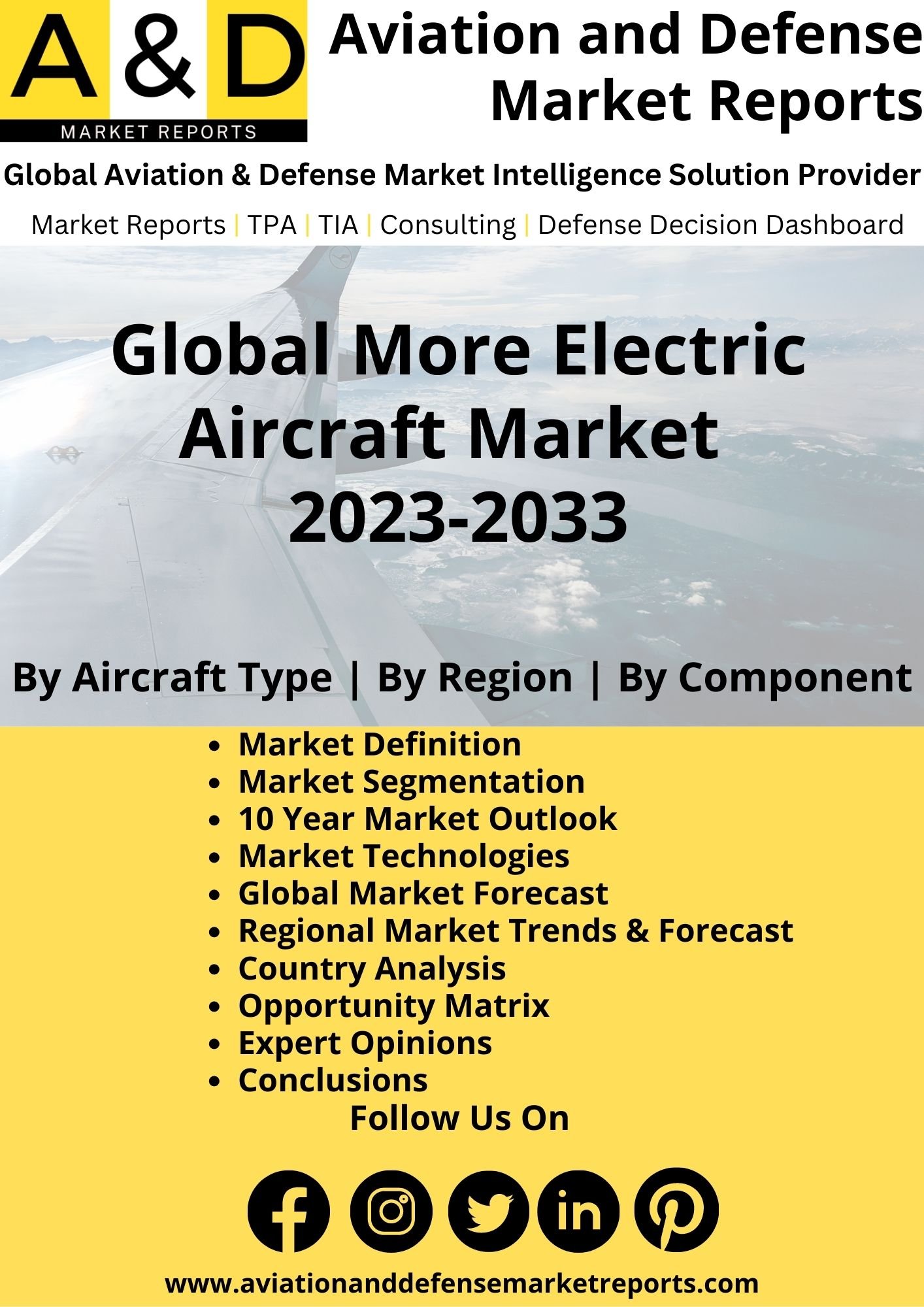Description
More Electric Aircraft Systems Market
Aviation companies are adopting overall or partial electrification of aircraft functions to avoid the environmental challenges posed by conventional aircraft and to comply with the regulations and restrictions imposed by aviation regulators globally. The more the electric aircraft involves, the gradual replacement of hydraulic and pneumatic power with electric power and aids in the reduction of fuel consumption, assembling cost, maintenance cost, greenhouse gas emission, and aircraft mass. More Electric aircraft (MEA) system market provide the concept of utilization of electric power for all non-propulsive systems. Traditionally these non-propulsive systems are driven by hydraulic, pneumatic, electrical, and mechanical. There is a recent technological advancements in the field of fault-tolerant architecture, flight control systems, power generation, conversion systems, high-density electric motors, electro-hydrostatic actuators, and power electronics which have defined the era of More Electric Aircraft system market analysis more electric aircraft. The electrification of More Electric Aircraft system market trends is accelerating, as aircraft manufacturers collaborate with their suppliers, to implement power-dense electrically intensive architectures and design to new systems.
Major factors driving More Electric Aircraft Systems Market Growth
Reduced emissions and noise pollution of the More Electric Aircraft system market growth are the drivers of this market. The increased adverse effects of noise pollution, it has to led to the implementation of various regulations on aircraft noise. Standards for noise pollution have been made even stronger with the adoption of the international standards for aviation noise developed by the International Civil Aviation Organization in 1971. For instance, the National Physical Laboratory of the Council of scientific and Industrial Research (CSIR) announced that noise mapping of all airports across India, while aircraft operations in Australia are needed to satisfy the noise standards implemented by the air navigation regulations.
Trends influencing the More Electric Aircraft Systems Market Size
The commercial segment had the highest market share in the electric aircraft market size. There are only a few electric aircraft in this segment; some of them are Boeing 787 and Airbus A350 XWB. Major aircraft manufacturing companies such as The Boeing Company and Airbus SE have introduced more electric architecture to their commercial aircraft. Airbus replaced three hydraulic systems with two electrical systems, for its A380 and A350 models, proving the technology to be safe for the aircraft. Airbus further wanted to replace hydraulic power systems with electric generators. Boeing recorded delivery of 1,006 of its Boeing 787 Dreamliner aircraft. Boeing 787 is one of the pioneers, which has more electric architecture systems. Previously powered by hydraulics or bleeding air from the engines are replaced by electric systems. New aircraft models are incorporated with a lot of electric architecture. Commercial aircraft engine manufacturers are also incorporating more electric architecture into their engines. For example, UK-based BAE systems invested to support Aircraft Electrification operations in Endicott, US. These kinds of developments are expected to drive the growth of the market in the future period.
More Electric Aircraft Systems Market Forecast & Dynamics
The main restraints of the MEA market are heavy investments and a long clearance period. The Development of advanced power electronic components is an opportunity for the market. One of the major challenges of the More Electric Aircraft system market forecast is weight. Many studies have said that MEA can reduce fuel burns, likely pertaining to, narrow body, wide-body, and even smaller aircraft. However, with the technologies we have today, MEA is heavier. MEA will replace hydraulic and pneumatic with electric, and this approach will consequently demand a higher electric power than the conventional approach. For instance, the total electrical power generation on Boeing 787 is above one MW while the conventional use less than ¼ of the power. It should be also noted that continuous improvements in power electronics and their associated controls and cooling will bring down the weight of the electrical components soon. New power electronics, new controls, new systems, and new cooling challenge the robustness, reliability, safety, and certification of the new More Electric Aircraft system market analysis. This causes tremendous cost, technical, resource, and schedule risks to the investment and development of MEA. It is imperative that we overcome the challenges and go forward with MEA.
More Electric Aircraft Systems Market Analysis for Recent Developments
Honeywell Corporation has been awarded a contract worth $476 million from the US Army for control units and CH-47 engine manufacturing. The control system and the engine will ensure the readiness of the mission for army warfighters and heavy-lift helicopters. General Electric and Safran said that they are working together, to develop technologies for jet engines of the new generation, which would cut fuel consumption by more than 20%.
One of the world’s leading regional airlines intends to add hundreds of hybrid-electric planes to its fleet. Dallas-based JSX, the only regional airline with a five-star rating from the Airline Passenger Experience Association, has signed letters of intent (LOIs) with manufacturers Electra. aero, Aura Aero, and Heart Aerospace to acquire up to 332 hybrid-electric models. According to Flying’s Jack Daleo, the charter jet service expects to receive its first delivery in 2028, followed by a hybrid-electric rollout that same year. The Electra eSTOL (electric Short Take-off and Landing) aircraft has a range of up to 500 nautical miles and can transport 9 passengers or 2,500 pounds of cargo. It has the unique ability to take off and land in less than 150 feet at very slow speeds, thanks to batteries that recharge in-flight, which eliminates the need for new ground infrastructure. The Electra eSTOL aircraft uses distributed electric propulsion, blown lift, and a small turbine-powered generator to power eight electric motors distributed across the wing, resulting in high lift at low airspeed and low drag at high speed. This allows the aircraft to operate cleanly and quietly closer to where people and cargo need to go, providing air connectivity where it previously did not exist.






